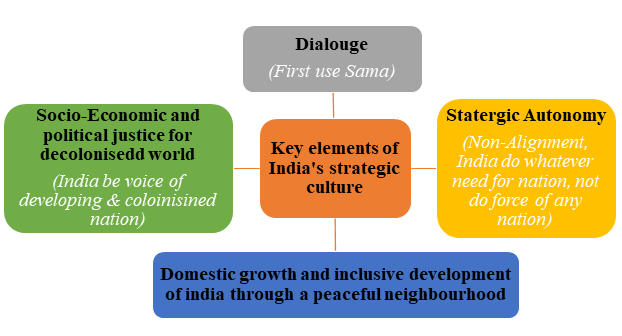India's Foreign Policy
- The 21st century is aptly called the Asian Century (China & India), and India is being one of the key Asian players has a great responsibility.
- It can act as a great stabilizer and power projector.
- India’s Foreign Policy till now has had a high degree of consistency since independence.
- What is unique is that this has been the case despite different ideologies being in power over the last decades.
- Up till 1947, the Indian Foreign Policy was used by the British as per British interests. (Indian soldiers are forced to fight in WW-I & WW-II)
- The British, in this period, applied their grand strategy which was based on securing trade routes and using the resources of India for self-benefit.
- They adopted the policy of a buffer establishment.
- Safely secured all routes to the British Empire in India.
- The British decided to manage the entire stretch of land border by establishing a semicircle from Iran to Burma.
- British Crown decided the foreign relations of all states.
- The entire system of these buffers was called the system of rising fence.
- In the outer rising fence were Iran, Afghanistan and Tibet and in the inner were Nepal, Bhutan and Ceylon for protect India.
- By this method, the British successfully kept China and Russia at bay.
- Mecmohan Line – Between India & Tibet (now Tibet capture by china).
- Radchiff Line – Between India/Pakistan & India/Bangladesh.
British India Diplomacy - IO
- At the international level, post-World War I, India was a part of Imperial war conference and signed the Treaty of Versailles and subsequently became a member of League of Nations (to prevent War) and ILO.
- India, surprisingly, was the one and only non-self-governing nation of the world in the League of Nations and after the World War II, India became a UN member in 1945 (Atlantic Treaty)while still under British rule.
- India had also participated in the Bretten-Woods Conference(World Bank – Developmental loan & IMF – Maintain Foreign exchange reserves) in 1944.
- British India joined UN, ILO etc… by pressure of congress.
- In 1914 – 1918 – Tilak, Gokala, Annie Besant, Lala Lajpat Rai Leading National Movement. (Before Gandhi Coming)
- Till 1929 – Congress ask for Home Rule, so 1919 Montague-Chelmsford Reforms – Bring Provincial autonomy (Local Government done by Indian, Center under British). Justice party won in Madras.
- 1927 – Nehru (as INC) attend International Oppressed Nation Conference, Belgium. (Make Road map after Independence).
- 1928 – 1933 – USSR First Five Year Plan.
- In 1929 – Nehru & Bose ask Purna Swaraj (Total Independence) at Lahore Session (Became Socialist).
- 1930 – Fascism Developed (Hitler (Germany) & Mussolini (Italy)) – Extreme Nationalism.
- INA Trails.
Determinants of Foreign Policy
- History
- Geography
- Economic development
- Military Strength
- Domestic Milieu (local Politics)
- International Milieu (International Politics)
Objective of India’s Foreign Policy
- According to Article 51 of Constitution. The State shall endeavour to
- Promote International peace and security.
- Maintain just and honorable relations between nations.
- Foster respect for international law and treaty obligations in the dealings of organised peoples with one another; and
- Encourage settlement of international disputes by arbitration.
.png)
.png)

.png)
Comments
Post a Comment